Because Clare asked for it…

Brian Jones, February 28, 1942 - July 03, 1969
Facts About Brian Jones of The Rolling Stones
The Early Years
 Brian Jones (birthname: Lewis Brian Hopkins Jones) was born on February 28th, 1942 to Lewis and Louisa Jones in Cheltenham, Gloucestershire, some 120 miles out of London
Brian Jones (birthname: Lewis Brian Hopkins Jones) was born on February 28th, 1942 to Lewis and Louisa Jones in Cheltenham, Gloucestershire, some 120 miles out of London
Jones was a rebel who embodied the more flamboyant aspects of the Rolling Stones’ lifestyle even before the Rolling Stones formed.
Lewis Jones, Brian’s father said this about Brian growing up: “Up to a certain point, Brian was a perfectly normal, conventional boy who was well behaved and well liked. He did his studies. He was quite a model school boy. Then came this peculiar change in his early teens. He began to have some resentment of authority. He seemed to have first a mild rebellion which unfortunately became stronger as he grew older.”
As a teenager he got into trouble by fathering illegitimate children; Brian was first a first-time father at the age of 16. Though the ‘facts’ regarding the true lineage of other children have come into question, at least five (5) children are known to exist or have existed.
Despite his high IQ, he shunned academic studies in favor of his passions for playing jazz and blues.
Jones himself was a natural musician who could pick up a new instrument and make music with it in no time. Emulating his hero, Muddy Waters, Jones taught himself how to play bottleneck guitar, dragging a glass or metal slide over open-tuned strings, which produced the essential and unmistakable blues sound. It wasn’t long before he had a reputation for being the best slide guitar player in London.
Founding The Rolling Stones

The Rolling Stones (from left): Bill Wyman, Brian Jones, Charlie Watts, Mick Jagger, Keith Richards
In May 1962, 20-year-old Brian Jones placed an ad in England’s Jazz News, seeking musicians for a new blues band he was putting together. The blues were Jones’ passion, and he envisioned a Chicago-style blues band modeled on American blues master Muddy Waters’s classic combo, consisting of rhythm and lead guitars, bass guitar, drums, harmonica, keyboards, and a vocalist.
The first person to respond to his ad was a square-jawed Scotsman named Ian Stewart who played boogie-woogie piano. Other musicians responded to the ad, but Jones was picky. Anyone who didn’t see eye-to-eye with his vision for the band was soon ejected.
Jones pursued a young singer named Mick Jagger who was getting a lot of attention for his idiosyncratic vocal style and his gyrating stage moves. Jagger also played harmonica, which made him all the more appealing to Jones, who recognized Jagger’s sex appeal with teenage girls. Jones instinctively knew that his band, like Elvis Presley before them, would have to tap into the teenage female market if they were going to make it. Jones met Jagger in a pub one night and invited him to come to a rehearsal.
That same night Jones also invited a skinny 18-year-old guitarist who happened to be tipping a pint at the pub. Keith Richards was known for being able to imitate the unique guitar playing of American rock’n’roll legend Chuck Berry. Jones wasn’t sure Richards would fit it—he was leery of hardcore rock’n’rollers in a blues band, but he was willing to give Richards a try. To his surprise, Jones found that Richards’ rhythm playing complimented his lead, and eventually they developed a style that has become the hallmark of the band—two interweaving guitars that switch parts freely, each one seamlessly going from rhythm to lead and back again.
Jones found a solid rhythm section in drummer Charlie Watts and bass guitarist Bill Wyman.
When it came to naming the group, Jones looked to his idol and adapted the title of the Muddy Waters song, “Rollin’ Stone.”
In early May 1963, the band’s manager, Andrew Loog Oldham, said Stewart should no longer be onstage, that six members were too many for a popular group and that the burly, square-jawed Stewart didn’t fit the image. He said Stewart could stay as road manager and play piano on recordings. Stewart accepted this demotion, left the formal lineup but stayed close to the band and would record and tour with them up through his death in 1985.
Though jobs of the other Stones were generally centralized to one or two roles, Brian’s role was not so simply defined. He was the band’s utility player on piano, guitar, harmonica (harp), drums, or whatever else was needed. At times, though more so in the earliest period, he had a strong hand in influencing the musical direction of the group.
Brian Jones was the most creative member of the band. As a musician, he was the envy of his peers, and his ability to pick up a new instrument and make it his own was truly remarkable. His work with the marimba on “Under My Thumb” and the sitar on “Paint It Black” from the Aftermath album are just two examples of his brilliance.
Jones was also the driving force of the band, at least initially, taking the leadership role in business and creative matters until his drug use forced a changing of the guard.
Finding an Identity During the British Invasion

The Rolling Stones with Jones standing (or sitting) apart
In the early ’60s, the Rolling Stones were just one of several dozen English bands, such as Herman’s Hermits, Freddie and the Dreamers, the Honeycombs, and Wayne Fontana and the Mindbenders, who were struggling to make it big. But by the mid ‘60s one band, the Beatles, had taken the lead position, leaving the others in the dust.
The Rolling Stones chose to distinguish themselves by going the other way, embracing a darker, more rebellious public posture. They went out of their way to be seen as the bad boys of rock, the band that parents would despise.
The Beatles wore uniforms when they performed; the Stones wore whatever they wanted. Jagger and Jones dressed like dandies in ruffled shirts and flowing bell-bottom trousers while Richards cultivated a disheveled, dirty blue jeans, proto-punk look.
The Beatles pumped out a steady stream of catchy tunes that became number one hits. The Stones proudly showed their down-and-dirty blues roots.
When it came to drug use, the Beatles—at least until the psychedelic period in the late ‘60s—kept their personal habits out of the press. The Rolling Stones by contrast became synonymous with drug use in England. But it was one aspect of their bad-boy image that they would have preferred to have kept private because it would eventually claim Jones’ life and nearly destroyed them as a band.
While the Beatles were soaring, playing in sold-out stadiums around the world, the Stones’ progress was hampered by persistent drug busts that dragged Jones, Jagger and Richards into court to the delight of the Fleet Street tabloids. (Bassist Wyman and drummer Watts, the family men of the band, shied away from drugs.)
Bad publicity affected the Stones’ record sales, and drug charges prevented Jones from going on tour in America with the band. Jagger and Richards smoked hash and marijuana and experimented with harder drugs, but they were generally able to function and flourish as musicians during this period. Jones, however, was another story.
Bill Wyman in Stephen Davis’s Old Gods Almost Dead summed up the two sides of Jones’ personality: “He could be the sweetest, softest, and most considerate man in the world and the nastiest piece of work you ever met.”
By all accounts Jones suffered from low self-esteem, deep insecurity and paranoia. He was always desperate for a woman’s company, but he treated his girlfriends horribly, physically abusing some of them.
He claimed to suffer from asthma and never went anywhere without an inhaler, yet none of his friends could recall ever seeing him have an attack.
Band Friction
 Friction between band members in any rock ‘n’ roll group is almost inevitable, but in many cases personal differences don’t stand in the way of making good music. The three front men of the Stones existed in a churning swirl of jealousies and shifting alliances.
Friction between band members in any rock ‘n’ roll group is almost inevitable, but in many cases personal differences don’t stand in the way of making good music. The three front men of the Stones existed in a churning swirl of jealousies and shifting alliances.
In 1963 Jones had cut a secret deal with their agent at the time, giving him five pounds more a week than the others because he was the leader of the band. That same agent had insisted on getting rid of Jagger, saying that he couldn’t sing, and Jones was willing to go along with Jagger’s ouster until their manager, Andrew Loog Oldham, stepped in and pleaded the singer’s case.
Jagger was the voice of the band, but Jones, with his fair-haired, androgynous looks was Jagger’s rival in sex appeal. Richards had found a guitar soulmate in Jones, but that bond began to dissolve when Richards and Jagger started writing songs together.
Not only did Jagger and Richards’ original material give them the edge in creative control of the band, song royalties put more money in their pockets. According to singer Marianne Faithfull, who was Jagger’s companion at the time, the building animosity between Jones and Jagger came to a head at a kiss-and-make-up dinner party at Richards’ country house where “Brian pulled a knife on Mick.” As recounted in A.E. Hotchner’s book Blown Away, Jagger got the knife away from Jones, but their scuffle continued. Jones jumped into the moat that surrounded the house to escape Jagger’s rage and Jagger followed him in. They tussled and thrashed in the water until they were too exhausted to continue.
By the late ‘60s Jones was unhappy with the Rolling Stones. The band he had founded was drifting away from his original concept: to interpret American blues and R&B for a white teenage audience. More and more the Jagger-Richards songs were setting the tone for the band, and it wasn’t always to his liking.
When the band had put together the songs for their psychedelic album, Their Satanic Majesties Request, Jones expressed his distaste for the work and predicted that it would bomb because the public would see it for what it was, a pale imitation of the Beatles’ landmark album Sergeant Pepper’s Lonely Hearts Club Band.
Further Decay on the Road to Morocco

Brian Jones, Anita Pallenberg and Keith Richards in Tangiers, Morocco, 1967
Feeling isolated from the band that he had created, Jones turned to drugs for solace. Jones’ drug use soon became a major liability for the Stones. Not only was he bringing them bad press, he was useless in the studio, frequently lying down on the floor and passing out with his guitar still strapped to him.
They all agreed that they needed a break to reassess their situation. Jones and Richards decided to take a vacation in Morocco. Jones asked his girlfriend at the time, Anita Pallenberg, to go with them. But what they’d hoped would be a much-needed period of rest and relaxation turned into a holiday in hell.
On the advice of their handlers, the Stones decided to disappear for a while in the hopes of getting off the front pages. In late February, Mick Jagger flew to Tangier. Richards, Jones and Jones’ girlfriend, Anita Pallenberg, decided to drive to Morocco in Richards’ Bentley, which was nicknamed the Blue Lena.
Jones, who was reputed to be monumentally self-centered even when sober, was apparently oblivious to the sexual tension building in the Blue Lena between Pallenberg and Keith Richards.
On the second day of the trip, Jones became ill with a respiratory infection and had to be hospitalized in Toulouse, France. The French doctors insisted that he stay for a few days, so he told his friends to go on and that he would meet them in Tangier as soon as he was well enough to travel. He spent his birthday alone in the hospital as the Blue Lena continued on. With Jones gone, Richards and Pallenberg couldn’t contain their feelings for one another.
A few days later a demanding telegram from Jones found its way to Pallenberg. He wanted her to return to Toulouse and help him get back to London where he could complete his recovery. Torn between Richards and Jones, Pallenberg sadly boarded a plane in Mirabella, Spain, to attend to her boyfriend.
Less than a week later, Pallenberg, Jones and Marianne Faithfull flew from London to Madrid, intent on meeting up with Jagger and Richards in Tangier. But Jones’ good mood had vanished, and his paranoia had kicked into high gear, having picked up on Pallenberg’s feelings for Richards.
As the trio made their way toward Gilbraltar, Pallenberg took Faithfull aside whenever Jones was out of earshot to ask what she thought of Jones in comparison to Richards.
They stopped at the Rock of Gibraltar to see the famous monkey colony. Jones, who was on LSD at the time, played his tape recorder for the monkeys who shrieked and fled in fear. Jones was so upset by their reaction he started to cry. Faithfull had a bad feeling about what would happen next.
Back in Morocco at the Hotel Marrakech, in the shadow of the city’s fabled red walls, Jones suffered a meltdown. In his hotel room, he confronted Pallenberg with her infidelity, shouting that he could see that something was going on between her and Richards. Fed up with Jones and his turbulent mood swings, Pallenberg admitted to her affair with Richards, throwing it in Jones’ face. Blinded by hurt and rage, Jones beat her more severely than he had ever beaten her. She fled from their room outside to the pool where she did nothing to hide her bruised face.
That night, Pallenberg went back to the room and took sleeping pills, hoping to get some rest while Jones was out. Later that night he burst into the room and woke her from a sound sleep. He was high on acid and had two Berber prostitutes with him. He wanted Pallenberg to join them in a foursome. Pallenberg refused, and Jones had a tantrum, trashing the room. Pallenberg grabbed her belongings and spent the night with Richards.
For Pallenberg and Richards this was the last straw. Jones was such a destructive presence they simply had to get away from him. They decided to go back to London and abandon Jones in Morocco while he was out touring with a friend.
Upon Jones’ arrival back to the hotel that night, he found that everyone had left for London, including Richards and Pallenberg. Alone and paranoid, Jones got on the phone and tried to get some answers, but no one would tell him where his friends had gone. But even though he was high, Jones could see the reality of the situation. Jagger and Richards had taken his band away from him, and now Richards had taken his girlfriend. Jones broke down into uncontrollable tears and needed a sedative to sleep that night.
On the Outs
 When Brian Jones had finally made his way back to London, he was an emotional wreck, and it didn’t help to find his apartment half empty. Anita Pallenberg had moved all her belongings out and taken up residence with Keith Richards. Jones begged her to come back, but she refused.
When Brian Jones had finally made his way back to London, he was an emotional wreck, and it didn’t help to find his apartment half empty. Anita Pallenberg had moved all her belongings out and taken up residence with Keith Richards. Jones begged her to come back, but she refused.
The other Rolling Stones were fed up with Jones and wouldn’t speak to him. They seriously considered firing him, but Mick Jagger objected. Always the pragmatist, Jagger felt that they still needed Jones, at least for the time being.
The Stones were scheduled to do a European tour, and Jagger felt that their popularity might be jeopardized if Jones, who was still a favorite with the teenage girls, was missing.
Jones didn’t want to go on tour with them. He was fed up with them as well. He also claimed to have forgotten how to play the guitar as a result of the psychic damage he’d suffered. But Pallenberg lured him back, holding out the slight possibility that they could get back together if he took care of himself and got back into shape. Jones agreed to do the tour and started taking guitar lessons.
He managed to survive the tour, even though none of his bandmates would speak to him. All along he had hoped for a reconciliation with Pallenberg, but she stayed with Richards. Caught in a swirl of drugs, alcohol and paranoia, Jones went into a tailspin. His mood swings became more pronounced, and the band could not count on him to show up for rehearsals or recording sessions. And when he did show up, he was useless to them, frequently falling asleep on the floor, seldom contributing anything substantial to the music.
By the spring of 1969, the band had to make a decision. If they were going to survive as a band, they needed to tour, and to tour they needed a reliable lead guitarist. Mick Jagger took the initiative and offered the position to a young blues virtuoso named Mick Taylor, who would end up staying with the Stones for the next five and a half years. There was just one little matter to take care of—firing Brian Jones.
On June 9, Jagger and Richards drove to Cotchford Farm, Jones’ home in Sussex (and once owned by A.A. Milne, the author of Winnie the Pooh), to hand him his pink slip. Mick and Keith weren’t happy being the hatchet men, but they knew it had to be done. Jones, for his part, had expected something like this, and he took the news placidly, agreeing to let them handle questions from the press whichever way they thought best. In recognition of his past contributions to the band, Jagger offered Jones 100,000 pounds upon his departure and 20,000 a year for as long as the band stayed together. After Jagger and Richards left Cotchford Farm, Jones went out into the garden and stood before a statue of Christopher Robin, weeping.
Death
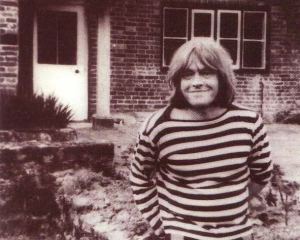
Last known photo of Brian Jones (taken at Cotchford Farm)
After being ousted from the band he created, Jones apparently had ambitions to form a band of his own, but on July 3, he drowned in his own swimming pool.
On the night of his death, Jones had been drinking wine and taking downers. Some suggested that he might have taken his own life, but those closest to him said he had no reason to commit suicide. Even though he had been officially ejected from the Stones several months earlier, Jones was reportedly getting over it and was planning new musical projects on his own.
At 2 a.m. word of Jones’ death reached the Rolling Stones at Olympic Studios in London where they were recording a Stevie Wonder song, “I Don’t Know Why.” The band fell into stunned silence, sitting on the floor, some of them lighting up joints. Drummer Charlie Watts quietly cried.
The Rolling Stones, with Mick Taylor as Jones’ replacement, went ahead with their planned free concert in London’s Hyde Park on July 5, 1969, staging it as a tribute to Jones.
The cloudy circumstances of his death have been the subjects of various theories over the years; some feel that he was murdered, other evidence indicates that it was an accident that might have been brought on by unwise combinations of substances and medications.
According to the coroner’s report, Jones was the victim of “death by misadventure,” an accidental drowning precipitated by drug and alcohol abuse.
Some time after his funeral, rumors gained momentum that Jones had been murdered. Inconsistencies in the accounts of that evening were gradually uncovered. A deathbed confession by the alleged killer was squelched by a loyal Stones’ retainer. More than 30 years later, suspicions persist.
Legacy

Jimi Hendrix and Brian Jones at the Monterey Pop Festival in June of 1967
Brian had a close relationship with his fans and, to this day, many have fond memories of him beyond admiration of his musical talent.
Though he may have tried, he failed to overcome his addictions until after he was forced to leave the Rolling Stones in 1969. His last full tour as a member was in 1966, after which he would only make few sporadic appearances, the final being the Rock and Roll Circus in December of 1968. As described by fellow Stones’ members, he had become a ball and chain by 1967. After two years, it was obvious that the band could not afford to drag him around to shows and recording sessions just so he could be too drunk or high to function. His final musical output with the band was released on the 1969 Let it Bleed album.
He gained the respect of many fellow musicians throughout his short career, such as the Beatles whom asked that he play a part in the recording sessions for Sgt. Pepper in 1967. Though “You Know My Name (look up the number)” was not included on Sgt. Pepper, it can be found on the Beatles’ Past Masters Volume Two, and more recently (in complete form) on Anthology 2.
Brian Jones never released a solo music album or single. He did however begin a project (completed posthumously in 1971) bearing his name, though it was not of his own work. Brian Jones Presents the Pipes of Pan at Joujouka was little noticed, but the inclusion of his name in the title did help to have the obscure Moroccan musical form recognized at a broader level. He played no part in the recordings, other than as a co-producer. Many incarnations of these recordings can be found on CD. It has been told that Moroccan artists to this day pay tribute to Brian in song.
Special thanks to www.beatzenith.com, www.trutv.com and www.starpulse.com

 The showman’s greatest financial catastrophe had nothing to do with show business. For years he had cherished the dream of building a city out of the farmland of East Bridgeport—a benevolent endeavor, he thought. In order to attract business, he signed some notes guaranteeing the debts of the Jerome Clock Company. As a result, he lost all he owned. Thus, in 1855, at the age of 46, the great Barnum was bankrupt.
The showman’s greatest financial catastrophe had nothing to do with show business. For years he had cherished the dream of building a city out of the farmland of East Bridgeport—a benevolent endeavor, he thought. In order to attract business, he signed some notes guaranteeing the debts of the Jerome Clock Company. As a result, he lost all he owned. Thus, in 1855, at the age of 46, the great Barnum was bankrupt.
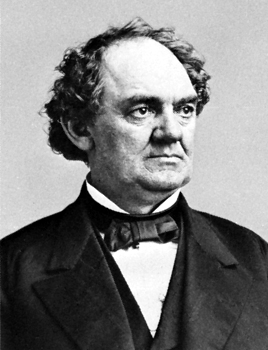



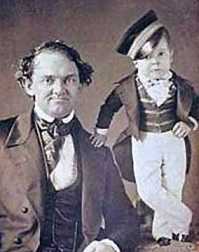
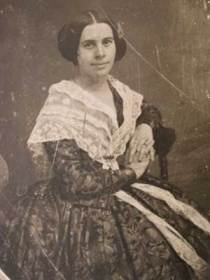



















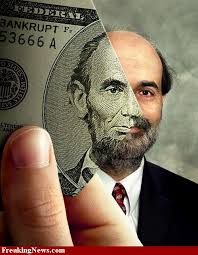



 The Mind of Adam J. Kovitz
The Mind of Adam J. Kovitz